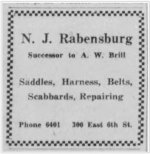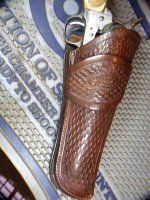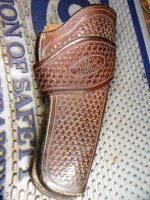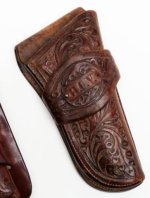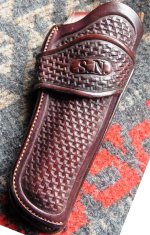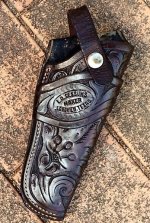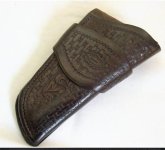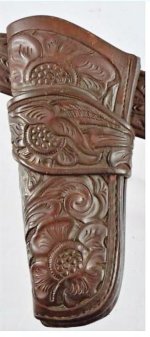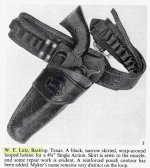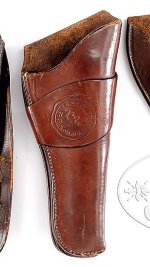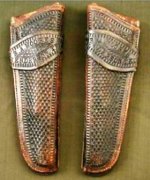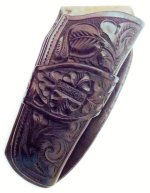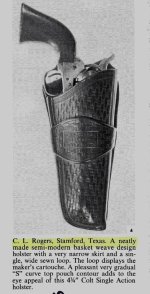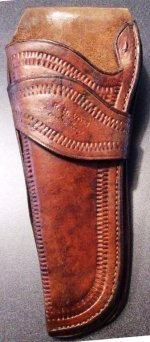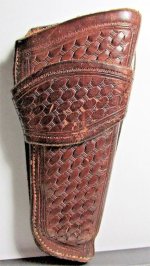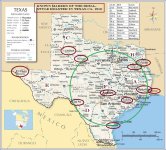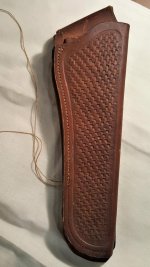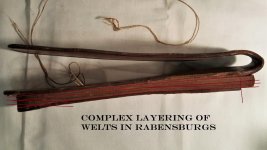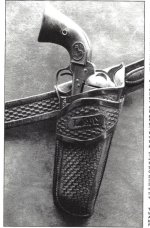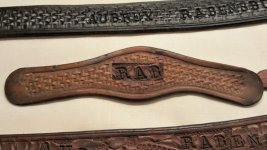rednichols
Member
- Joined
- Jul 24, 2012
- Messages
- 2,745
- Reaction score
- 8,482
I grew up unaware of the “Brill” design. This is a new subject for me. I knew my grandfather was popular because I continued to get a few forwarded requests for holster orders from as far away as Detroit, Michigan for several years following his death. The Brill name was also a familiar subject including the store location on 6th Street in downtown Austin. Arno Brill III, who was a guest of mine in La Grange, Texas several years ago, was unaware of N. J. Rabensburg and his connection with the A. W. Brill Company. This caught me off-guard since my grandfather supposedly had a strong connection with the Brill company and a probable ownership position. However, Brill III denied any such connection with Rabensburg.
This man surely was not a "Brill III" but A.W. Brill Jr.'s (he also was not a III though the family engraved his headstone that way), brother Bob who died only recently.
There is plenty of evidence including the 1959 article you mentioned that N.J. took over the Brills' saddlery operations. There is also Rabensburg ad of 1937 in which he clearly states he is 'successor to A.W. Brill'. And then there's his address: in 1932 his appearance in the Austin directory is at 302 E. 6th, which was Brill's.
And the prior mayor of Llano was Arno's brother in law; I'd say the two families never lost touch over the years. And the Brills had something far better to do than make holsters: they had created Brillville, which opened in 1948 after the War was over.
I'll admit that from Nelson's article I was assuming (it seems now, incorrectly) that your grandfather was in Austin because Capt. Hughes was stationed there (dismounted). Nelson's chronicling is quite literal elsewhere and in this case he neither says nor implies that N.J. was in Austin; La Grange being their meeting place is quite plausible. Hughes was all over Texas and La Grange is very close to Austin anyway.
The most likely way, then, that your grandfather's new design got to August Brill -- who was not a saddler, by the way, he merely worked for one -- was by Hughes taking the design to W.T. Wroe & Sons in Austin. Both Wroe and Capt. McNelly (d. 1877) were in the 5th Texas Cavalry together during the Civil War (Confederate) and Wroe married McNelly's widow Carey in 1908. It would have been a natural for a senior Ranger to consider Wroe -- and that's just where Brill was working at that time. There were a dozen known makers of Brill copies scattered only in Texas, in about a 200 mile radius around Austin; perhaps Hughes played 'Johnny Appleseed' with the new design (which we speculate was actually developed from King Ranch's earlier, bulkier version) on behalf of his men.
August did not take over Wroe's saddlery company as suggested by the Vintagegunleather site. Wroe continued operations under that name until he retired in 1915; he was a carriage dealer and then a car dealer during that era. At retirement his son changed the name of the operation to W.T. Wroe and Son (not Sons). August's operation appeared for the first time, as you know, in the 1912/13 city directory that was issued after November 1912.

